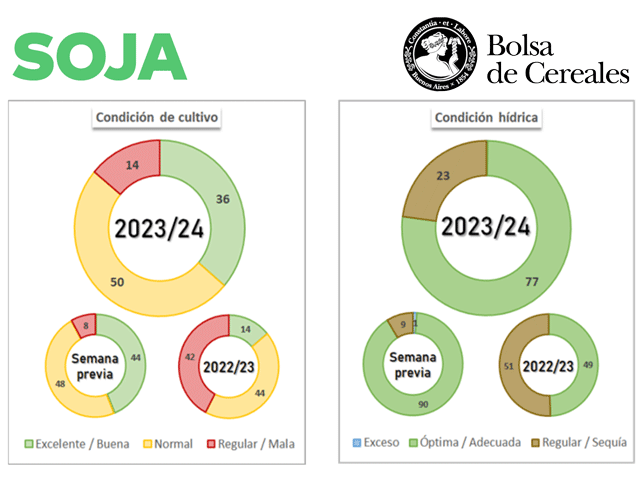South America Calling
Argentina Soil Moisture, Crop Conditions Falling Rapidly
After a promising start to the crop season in Argentina, two weeks of hot and dry conditions are taking its toll on corn and soybeans at a critical time. Near-complete dry conditions have popped up for the country's primary growing area -- the Pampas region across central and northern Argentina. To go along with it, temperatures this week have been pushing the 40-degree Celsius (104 degrees Fahrenheit) barrier.
In response, soil moisture is plummeting quickly as more and more of the corn and soybean crops enter their critical reproductive and grain-fill stages of growth.
According to reports from the Buenos Aires Grain Exchange (BAGE), as of Jan. 31, soil moisture in corn areas has gone from 92% optimal two weeks ago to just 72% this week. For soybeans, those numbers were 90% two weeks ago to just 76% this week. As a result, good-to-excellent crop conditions in corn fell from 97% two weeks ago and 95% last week to 89% this week. The drop in soybeans was similar, going from 98% good-to-excellent two weeks ago and 92% last week to 86% this week.
P[L1] D[0x0] M[300x250] OOP[F] ADUNIT[] T[]
The worst conditions are in the south, where rainfall patterns this season have not been as beneficial as farther north, and temperatures are currently higher.
According to the BAGE report, corn is 46% pollinating and 34% silking while soybeans are 59% flowering and 23% setting pods. The advanced stages make this a critical period for both crops. The temperature forecast continues to suggest days near the 40-degree C mark through Feb. 7 before a front moves through southern areas and brings temperatures down. That will also bring in some rounds of very helpful showers.
Models disagree on whether showers will move in before the front or only along it, but they will be needed very soon. Indications from both the European and GFS models suggest a return to hit-or-miss showers across the country with a greater focus on the northern end of the region through the end of February. Those areas in the south that are already having a harder time coping with the hot-and-dry stretch may not see the frequency needed to reduce stress.
After forecasts have been calling for close to a doubling of the Argentina corn and soybean crops from last year, it is uncertain if the rains will come with enough intensity and frequency in February to reverse the damage that is likely being caused or if it will only stabilize crop conditions.
The update from BAGE on Feb. 7 is likely to show another steep decline in the poor forecast for the next week, but it may reverse trend thereafter. The USDA World Agricultural Supply and Demand Estimates report due Feb. 8 is unlikely to change its estimates for Argentina but it should be noted that if it does, it would likely be down due to recent weather conditions.
Download the BAGE report here: https://twitter.com/…
To find more international weather conditions and your local forecast from DTN, visit https://www.dtnpf.com/….
John Baranick can be reached at john.baranick@dtn.com.
(c) Copyright 2024 DTN, LLC. All rights reserved.






Comments
To comment, please Log In or Join our Community .